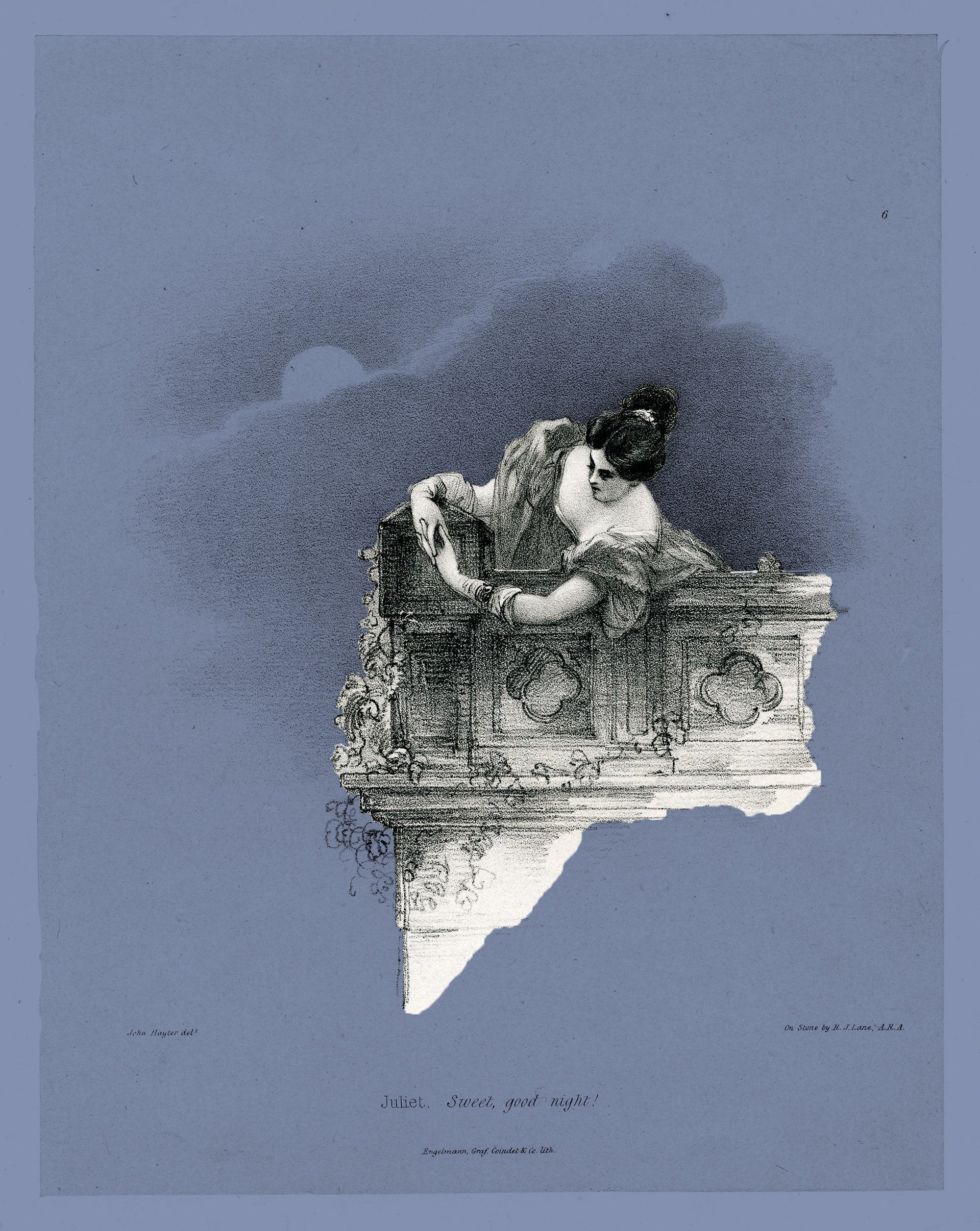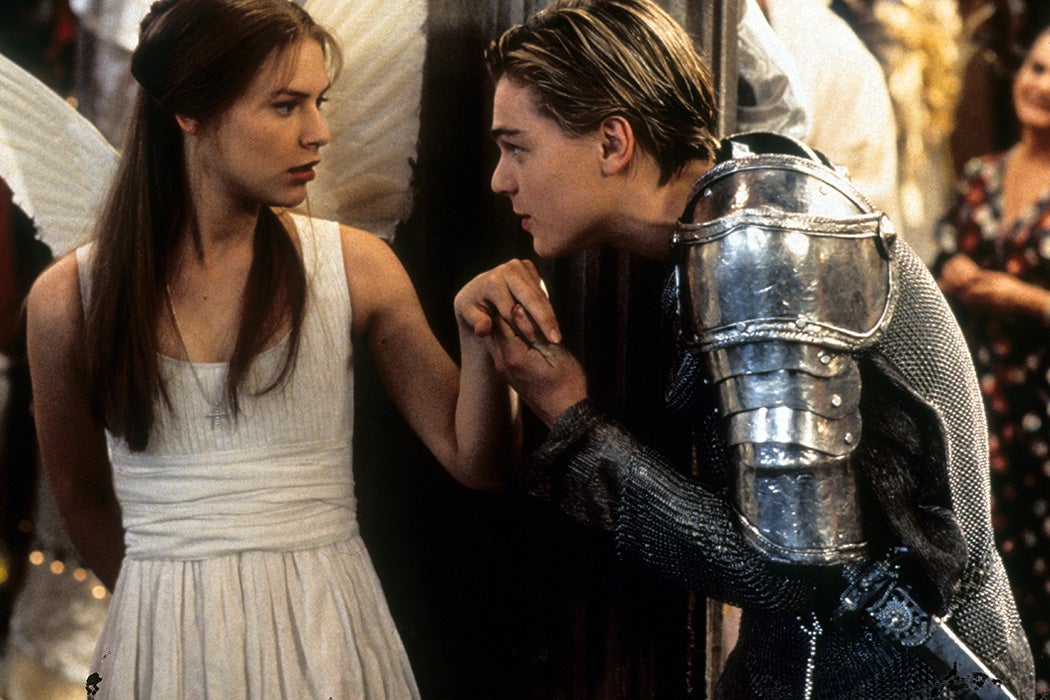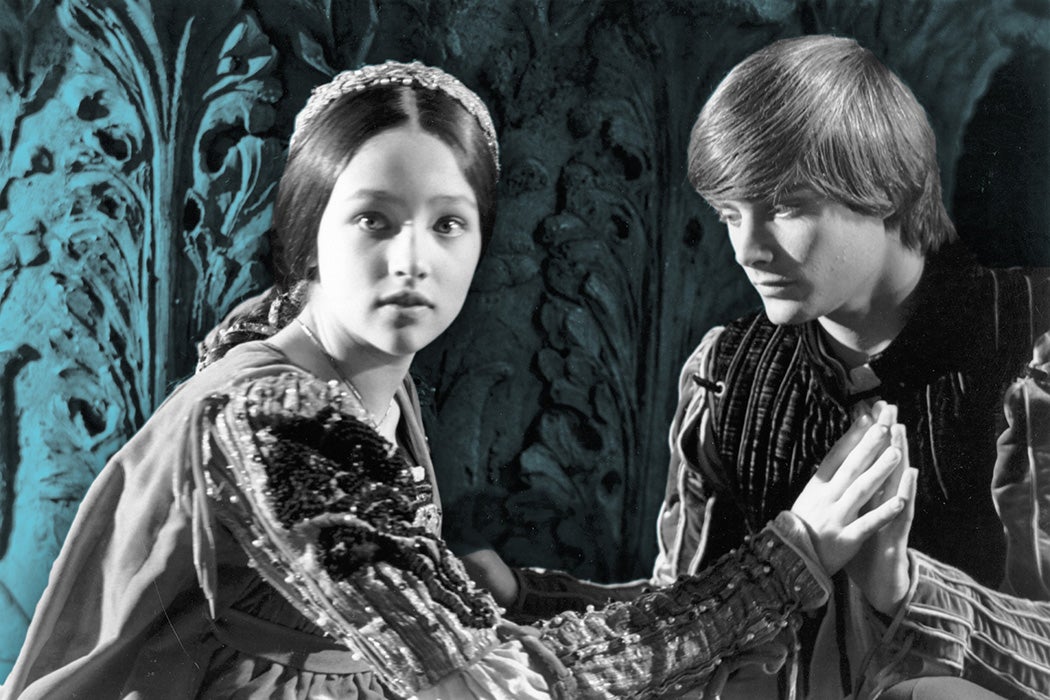When playwright William Shakespeare invented Juliet, the protagonist of his famous romantic tragedy, he crafted a timeless literary figure. Obviously, the great Bard could not foresee the advances in technology that would usher Romeo and Juliet beyond his native London, nor could he predict how many actors would play her. But whether in a dramatic staging, Hollywood film, or a jukebox musical, every actor who takes on Juliet faces the same harrowing challenge: persuading the audience that she is the young, headstrong, devoted, and hopelessly-in-love heiress of an at-war noble house, all while reciting, “My bounty is as boundless as the sea. My love as deep; the more I give to thee, the more I have, for both are infinite,” and other iconic Shakespeare selections.
As boundless as Juliet’s blossoming love for Romeo are the calls to cast her. Romeo and Juliet is one of the greatest ongoing franchises, and like the characters of Hamlet or Lady Macbeth or even more modern favorites like Sherlock Holmes or James Bond, Juliet is a chameleon, portrayed differently in every production, with varied inflections based on the tastes of the time period, the inclinations of the director, and the individuality of the actor.
Likely the first ever performance of Romeo and Juliet took place at the Theatre in London in 1597; the star-crossed lovers then were played by Richard Burbage (Romeo) and Robert Goffe (Juliet), distinguished members of Shakespeare’s company the Lord Chamberlain’s Men. At the time, women were forbidden from public performance; female roles were enacted by effeminate pre-adolescent men whose voices had not yet broken. Lorraine Helms speculates that this meant that the femininity of Shakespeare’s female characters such as Juliet was probably grossly exaggerated for the audience, who would have needed special convincing to accept the seriousness of the cross-dressing theatricals: “The performance of the boy actor could have been eroticized for some spectators, aesthetically distanced for others,” she states. Helms goes on to suggest “it could foreground the social construction of gender by imposing femininity on male bodies and at the same time trivialize women’s social roles in puerile caricatures.” Informed by Helms’ perspective, Goffe’s turn as Juliet can be easily imagined: the first Juliet was very much a girl, embodying every feminine virtue, and stereotype, for the time period, with very few subversions of gender role representation. A swashbuckling, genderbending tomboy like Viola from Twelfth Night wouldn’t be introduced by Shakespeare to the Elizabethans until after the turn of the century.
Weekly Newsletter
Goffe’s Juliet was obviously successful, as Romeo and Juliet became a sixteenth century hit that launched the popularity of tragic romances and the oft-quoted phrase “star-crossed lovers.” Modern-day film adaptations such as John Madden’s 1998 Shakespeare in Love have made attempts to dramatize Romeo and Juliet’s historic debut, albeit with many liberties. Yet the flamboyant film remains truthful in one respect: Juliet most certainly mesmerized her audience when she walked on stage for the first time to recite: “How now, who calls? Madam, I am here. What is your will?”

In 1661, women were allowed to perform in England, and Mary Saunderson was the first to play Juliet. According to essayist Thomas King, she was well-equipped for this task, as well as other Shakespearean roles, and earned the praise of critic William Oldys, who “described Mary Saunderson (later Betterton, [when she married]) as ‘having, by Nature, all the accomplishments required to make a perfect Actress.’” Saunderson had a reputation for living a morally outstanding and scandal-free life. Fellow actor Colley Cibber described her as conducting “an unblemish’d and sober life,” a contrast to the prevailing stereotype that all actresses were promiscuous and easily corruptible.
Shakespeare never fell out of favor with the viewing public, but as with everything, interest ebbed and flowed. Nineteenth-century England saw a boom in Shakespearean-appreciation for both his comedies and his tragedies. Actors tried to establish themselves by taking on his roles. Among them was the Irish actress Eliza O’Neill who performed as Juliet at London’s Covent Garden in 1814 to critical acclaim. She did so at a time of considerable prejudice against workers and professionals born in Ireland; the English saw them as unschooled thieves and cheats.

“The belief that the Irish in England were the harbingers of crime was by no means novel,” comments historian Roger Swift in his study of Irish immigration to England in the 1800s. “With the substantial increase in Irish immigration during the early Victorian period, the host society’s widespread belief in the innate criminality of the Irish—and, more particularly, of the Irish poor—formed an integral component of the negative side of the Irish stereotype.” O’Neill’s triumph as Juliet, and her subsequent acceptance into the world of high-end theatre was considered a significant step towards altering general public opinion of the Irish.
At the time England remained devoted to its own thespians. According to women’s historian Anne Russell, Fanny Kemble, an English-born actress and memoirist, pulled off a historic performance as Juliet at the Covent Garden Theatre in 1832; her friend and admirer Henry James would describe her death in 1893 even more tragically than some would describe Juliet’s, as ‘the end of some reign or the fall of some empire.” In an interesting twist, Kemble’s Romeo was played by Ellen Tree in a bit of homoerotic gender-swapping that arguably evens the score with the male-only sixteenth-century. And yet the character of Juliet became the paradigm of the feminine ideal—lovely, gentle, loyal her beloved, and utterly lacking in vice—in this otherwise highly conversative time period. Actresses had to take special care to emulate Juliet personally and professionally. “Nineteenth-century actresses went to great lengths to portray themselves as respectable, domestic, and above all conventional in their home lives,” Russell writes. “Fanny Kemble’s account of her debut as Juliet represents her as a dutiful daughter who began performing not because of her own desire but in obedience to her parents’ need to recuperate her father Charles’ financial losses.”
This perception of Juliet as an icon of pure goodness was destined to change. The sexual revolution of the 1960s redefined expectations of female representation, and compelled time-honored characters like Juliet to participate in adventurous, and somewhat dangerous, feats of visual eroticism. “The trend towards liberalisation and greater freedom in sexual relations has been termed a ‘sexual revolution’ in which the introduction of the contraceptive pill played a significant role,” historian Sue Bruley expresses in her critical analysis of the sex-positivity movement in England. “There is also evidence from memoirs of this period which point to women experiencing a darker side to this new permissive culture. The commercialisation of sex meant that images of women’s bodies were increasingly on public display in newspapers, advertising, films and television.”
Franco Zeffirelli released his adaptation of Romeo and Juliet in 1968, in the thick of that period of great change, with Leonard Whiting and Olivia Hussey, both minors, as the star-crossed lovers. In keeping with the era’s sexual freedom, Zeffirelli invented and included a controversial scene that appears nowhere in Shakespeare’s original script; the actors are filmed lying naked together. Viewers see Juliet’s breasts and Romeo’s bare bottom. Before this film, it had never been considered necessary to show viewers that Romeo and Juliet consummated their relationship; this aspect of their union was ambiguous, and scholars have long debated whether the relationship was physically intimate or an idealized, chaste courtship. Though the couple part ways after spending the night together in Act 3, scene 5, what actually occurs between them is not made explicit.
Theatre critic Rachel Prusko argues that Shakespeare intended for theirs to be a unique love based on romantic communication and shared purpose, not the detached and crude physicality with which the society of fifteenth-century Verona defines relations between men and women: “Romeo and Juliet rewrite the story that has scripted their lives and constitute themselves as subjects through the development of a private language: in narrative, dissimulation, and word play,” Prusko remarks. “They are eager to establish a way of speaking that reflects their private experience, and that distinguishes them from the adult community around them.”
Olivia Hussey, in a 2018 interview with Variety, was proud to be the first in history to depict Juliet as bold and sexually active. “Nobody my age had done that before,” Hussey said, fifty years after the scene was shot. “It was needed for the film.” Yet, the scene apparently scarred both actors, who recently filed a lawsuit against Paramount Pictures alleging they were sexually exploited and suffered both psychological damage and irreversible blows to their careers.

Director Baz Luhrmann also cast an underage actress, sixteen-year-old Claire Danes, as his Juliet in 1996, though he was more careful with the wedding night scene; only Danes’ bare back is filmed. She and her fellow lead Leonardo DiCaprio, then 21, reportedly clashed on set, yet despite their youth, they delivered an authentic performance that strips “away the accumulated years’ conception of the play as a romance, and restores it as a gripping tale of star-crossed lovers,” according to Sarah Lorenz. Promoting the film in 1996, DiCaprio noted that Danes brought a confidence to the role which other actors vying for part lacked. “When we were first doing the audition,” he told Entertainment Tonight, “she was the only girl who came up right to my face and wasn’t afraid to grab the back of my neck and kiss me and hold my hand.” It was precisely Danes’ backbone that made it so easy for audiences to believe that resolute Juliet was willing to die for Romeo.
Fast forward to the 2010s-2020s and an age of women’s empowerment. It is the era of the “girl boss,” and there may be no other such boss as the Juliet prancing across Broadway in & Juliet, a flashy coming-of-age musical. Called a “remix” of the original Romeo and Juliet story on the poster for the West End production, it operates under the following premise: what if Juliet had lived? In 2020 performer Miriam-Teak Lee collected a prestigious Olivier Award for her portrayal of a loud and self-assertive Juliet, which has earned her widespread critical acclaim. In a 2019 interview with Evening Standard, an exuberant Lee boasted about reclaiming the role of Juliet for women like herself who have brazen, unapologetic personalities. “Originally in the script, the idea of Juliet was that she was this timid, subservient girl who finds her confidence and grows. But when I walked in [the writer] David West Read was like, there’s no way that’s gonna work!”
In addition to its New York staging, & Juliet is currently running in England and Australia. Western audiences seem to appreciate this feisty incarnation—strutting about the stage floorboards in trousers, form-fitting and jewel-encrusted corsets, and headphones—as a commendable role model for girls and women who seek more from life than to be swept away by romance. “Gone are the days where Juliet is a tragic, gone-too-soon character in a Shakespeare play,” wrote Isabella Perrone in her rave. Juliet of the twenty-first century is entitled to respect, fun, and the opportunity to discover herself outside of her famous love affair.
Juliet’s evolution continues apace. The next generation of Juliets will be both loving tributes to the pioneering material while undergoing transfigurations to suit their respective eras. Will the new Juliets be romantic or levelheaded? Will they be sexy grown-up, or unworldly adolescents? The answers belong to the actors, directors, and writers, for whom Juliet remains promising base clay which they alone are free to mold and shape.
Support JSTOR Daily! Join our new membership program on Patreon today.







